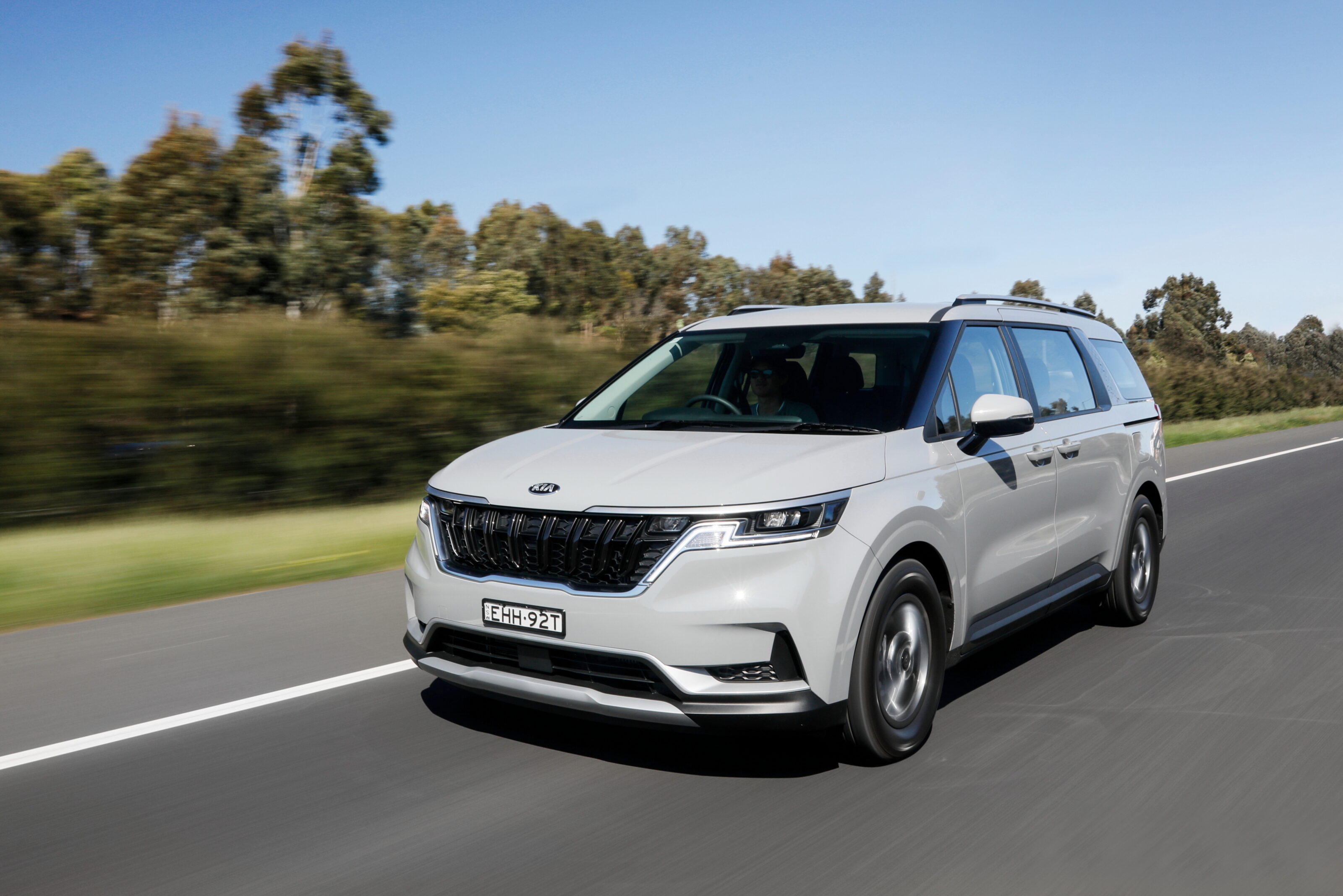Score breakdown
Things we like
- Excellent handling
- Smooth, grunty powertrain
- Functional interior
Not so much
- Bare specification in S trim
- Steering rack rattle
- Front seats could be comfier
The new Kia Carnival’s television commercial begins on a race track. At night. And powering towards the camera is a pair of headlights. They’re angular, aggressive. Next, a lamp catches a wheel pummelling the rumble strip.
As the camera pulls away, more of this mystery car is revealed, and we see the outline of a Kia. It’s the new Carnival, clearly placed somewhere strange for an eight-seat family-hauling van.
We get that Kia wants to reframe the Carnival, released earlier in 2021, as more than a people mover, given the ad ends with it being labelled a GUV or Grand Utility Vehicle. The acronym’s similarity to SUV is no coincidence, as it hopes to pit the Carnival against SUVs and boost private sales.
But there’s not much to suggest the fourth-generation Carnival has morphed into an SUV itself. Kia has lengthened the wheelbase from 3060mm to 3090mm on the new platform. The body’s 40mm longer and 10mm wider, but it stands at the same height as before.
EDITOR’S NOTE: The vehicle pictured is wearing Kia’s older logo, but is otherwise current specification.
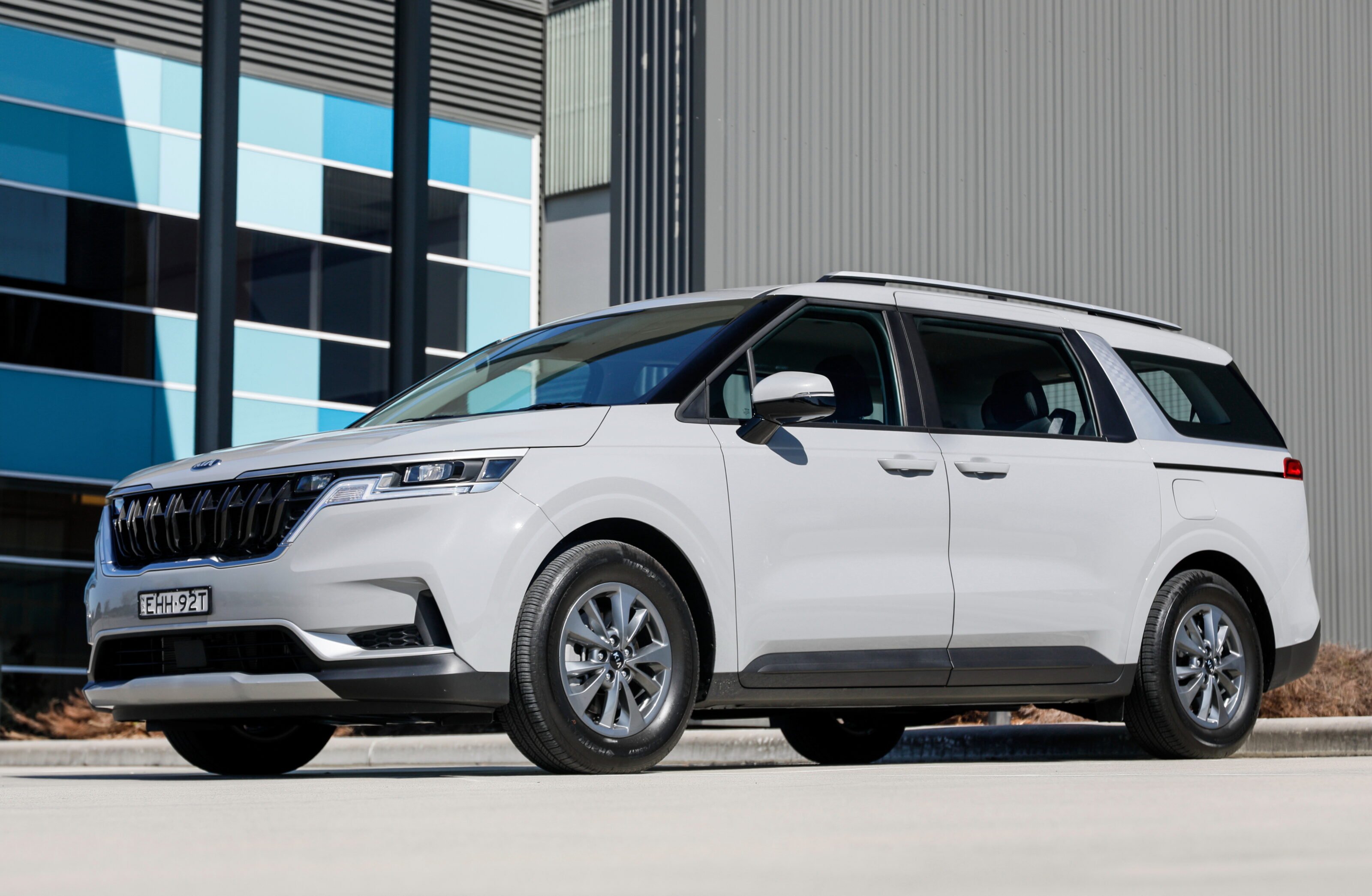
It does, however, ride on an N3 platform shared with the Kia Sorento seven-seat SUV and shares its engines. Either a 3.5-litre petrol V6 and 2.2-litre turbo-diesel four drive a Carnival’s front wheels, although the diesel misses out on the Sorrento’s eight-speed dual-clutch automatic and makes do with an eight-speed torque converter.
Visually, the new Carnival could simply be a mid-cycle update of the previous version. A heavily restyled front- and rear-end, sculpted side sections and higher bonnet combine into an edgier look than the third-gen model.
Ease into the Carnival’s front pews, and it’s easy to appreciate the space, thanks to Kia using its 1995mm width well. Ample room between the front seats opens space for elbows and access to the workstation for rear passengers.
For the driver, headroom is excellent. As is footwell space. And while the workstation retains a driver-centric architecture, with the central stack rotated slightly towards you, it’s been heavily restyled and looks much cleaner.
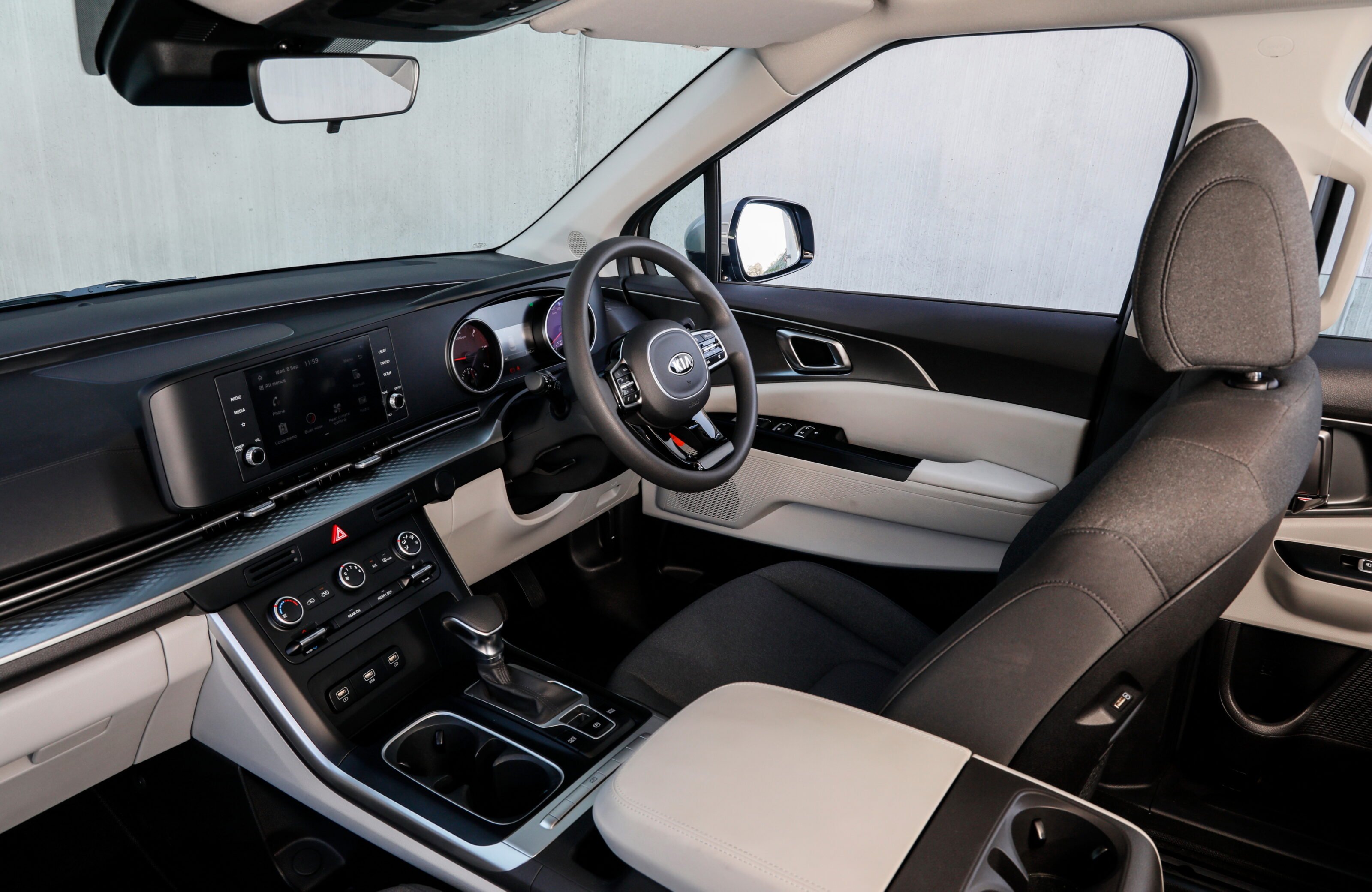
In our tester’s base ‘S’ spec, kicking off the range at $51,690 before on-road costs, it misses out on the technology and convenience features saved for the one-step-higher Si grade and beyond, such as the 12.3-inch central infotainment widescreen loaded with DAB+ digital radio, sat-nav and wired Apple Carplay.
Instead, the 8.0-inch central touchscreen features wireless smartphone mirroring and wired Android Auto compatibility, played through a sound system with six speakers instead of eight. You also make do with manual air-conditioning control.
As for other niceties, an Si comes with auto window defogging and folding side mirrors for $57,390 plus on-road costs. But twist-key start and regular remote central locking, as well as the cloth seats that are manually adjusted, are only replaced once you upgrade to the Carnival in SLi trim, coming in at $59,390.

Inside, the Carnival holds an eight-seat interior layout at the core of its purpose, setting it against a broad range of rivals that spans everything from the Honda Odyssey and Toyota Granvia to the Mazda CX-9 and Hyundai Santa Fe, as well as the recently arrived Hyundai Staria.
Middle row passengers enjoy spacious outboard seats and their own climate control. But the central seat is hard, unforgiving and better used for short trips or folded down to function as an armrest with drink holders.
The boot swallows a monstrous 2785 litres worth of cargo while seating five. Even with the third row upright, the boot provides a capacity of 627 litres.
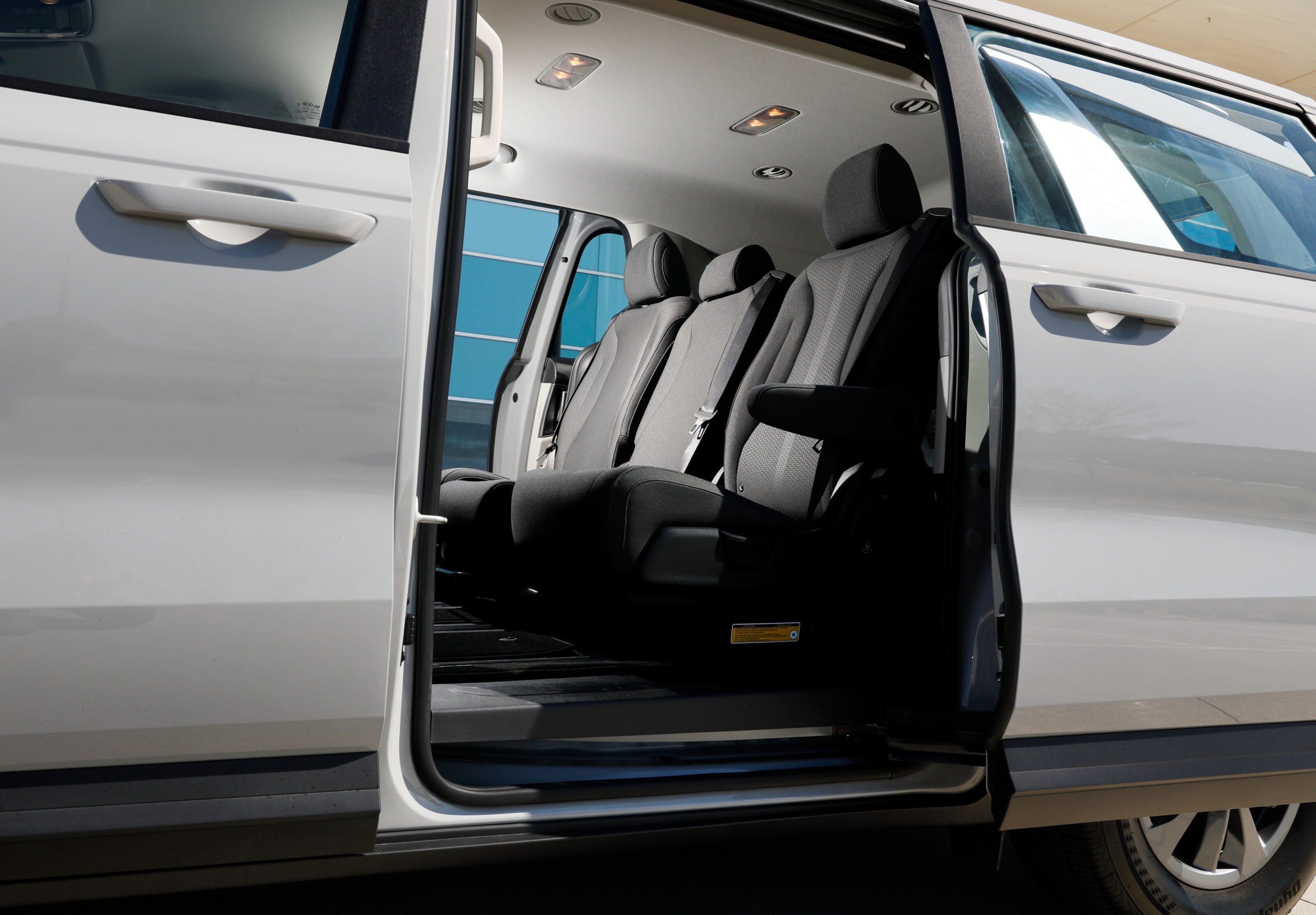
Up back, the seats are the least comfortable – of course. But it’s not that stuffy. There’s enough knee room, the floor vents offer good ventilation and it’s light-filled as well.
You need a fair bit of muscle to configure the seating plan to a wide range of living scenarios. Stowing the middle seats is easily done by pulling a lever, but they’re hefty to restore upright. Each pair of outboard seats also features child seat anchors.
You can remove (or reverse) the central seat from the middle row, which is heavy and clunky to unlatch. Meanwhile, you can also flatten the back seats forwards at a 60:40 split or stow them in the boot.
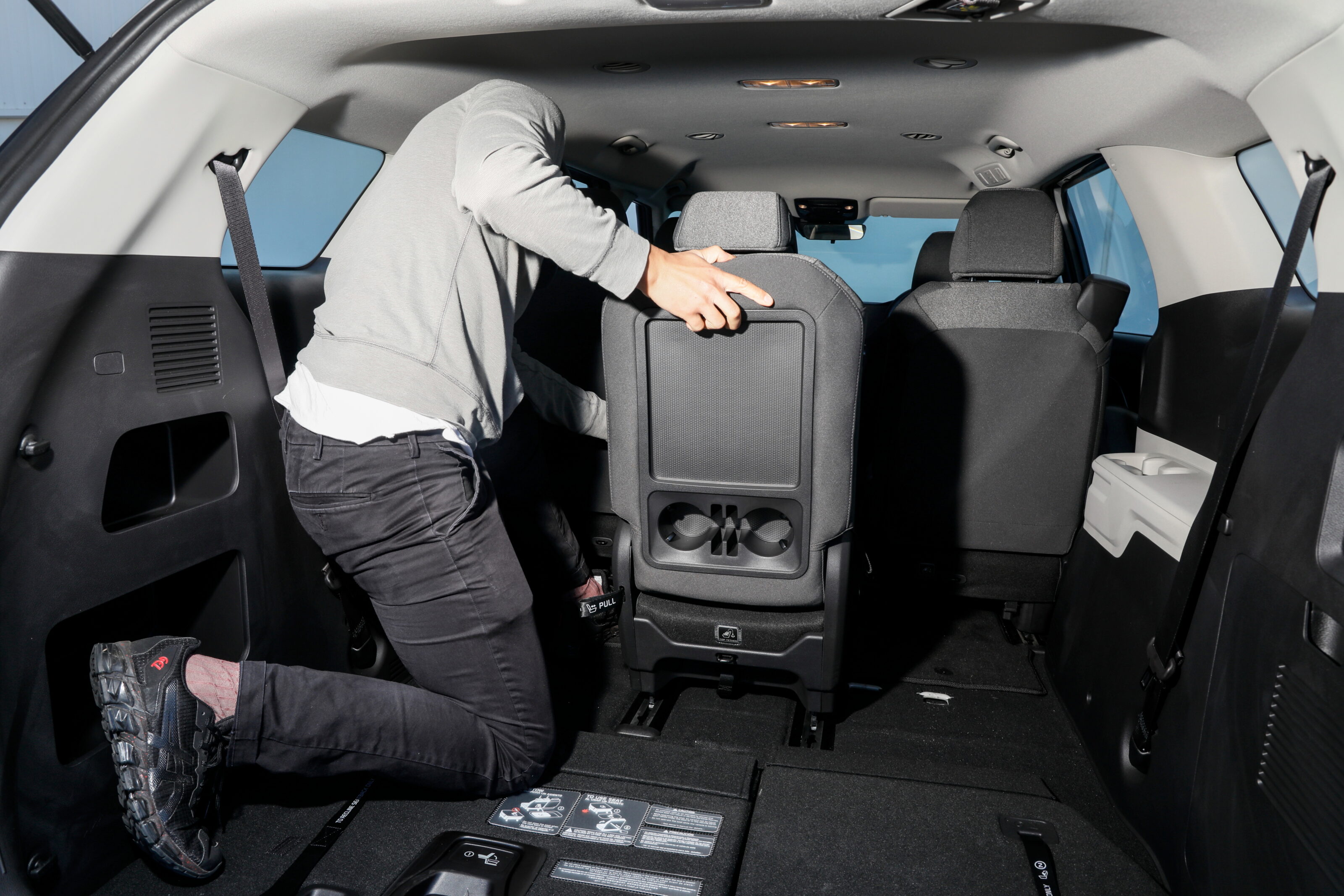
Speaking of, the boot swallows a monstrous 2785 litres worth of cargo while still seating five. Or, even with the third row upright, the Carnival’s boot provides 627 litres of capacity. That crushes a Honda Odyssey’s 322 litres.
But the space comes at a small cost. The deep boot has left nowhere for the spare tyre to go except under the driver’s sliding door. Hankook Dynapros are standard fitment. At 235/65 R17, they’re big cushy rubber rings that do well to calm the Carnival’s ride, even if they do offer little grip.

Given the tyre grip, it’s impressive how much dynamic talent the Carnival’s chassis delivers. Its strut front and multi-link rear suspension err on the firm side, but the ride never gets tetchy and should only improve with more passengers.
It’s hard to fathom that Kia’s local dynamics team kept an international steering tune since the new Carnival steers with a cohesiveness that belies its 2.1-tonne kerb weight. Besides some rack rattle, the Carnival tracks its intended course with an otherwise dogged focus, thanks to a low centre of gravity and keenly balanced chassis.
All of which gives the 2.2-litre diesel a good platform to deploy its grunt. The engine is tractable, and the drivetrain is responsive from down low, with the transmission and throttle mapping tuned well to suit both urban and dynamic situations.
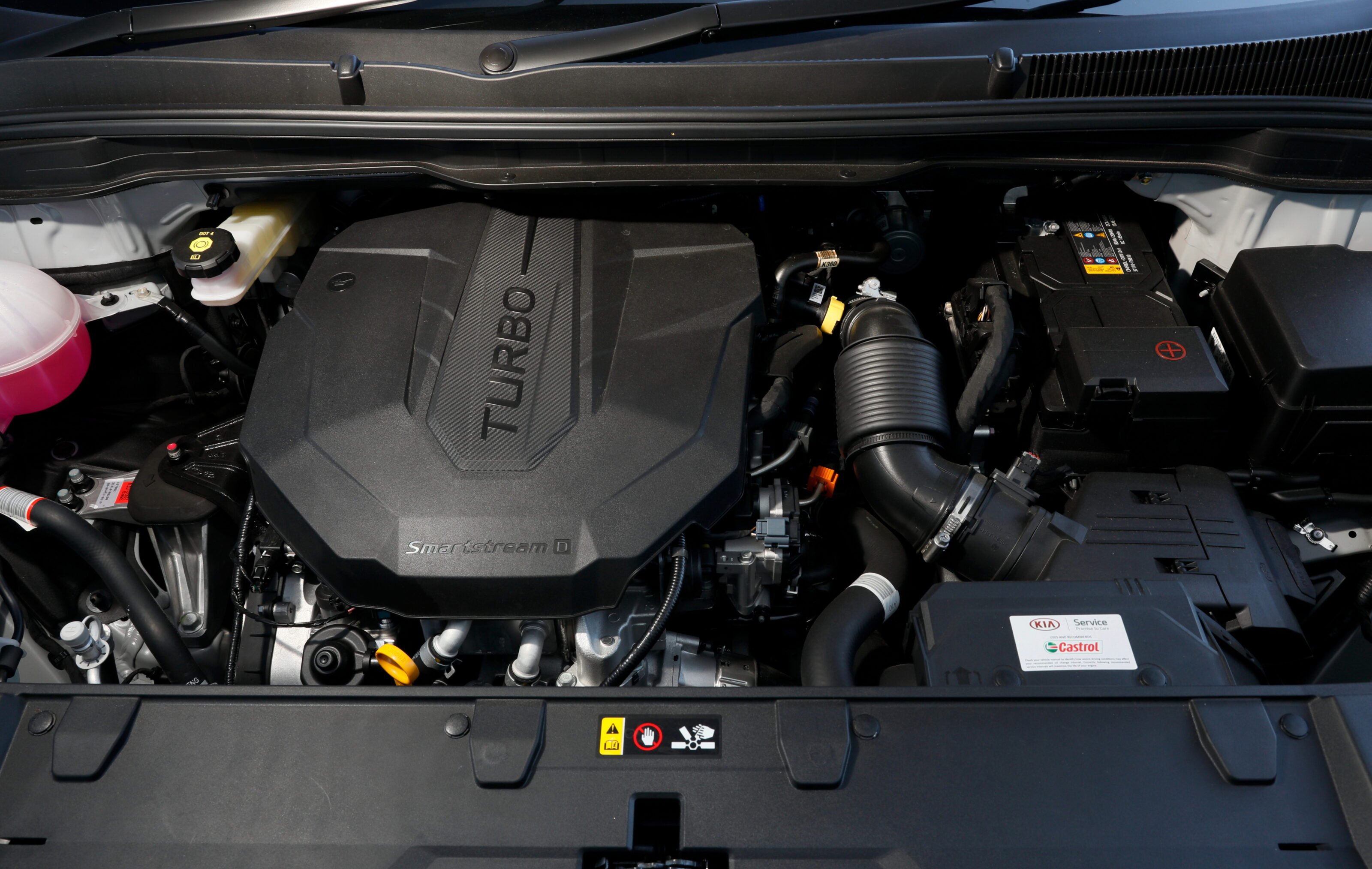
Chirps of wheelspin only ever escape from the front Hankooks when the road is less than smooth, the Carnival more than capable of handling the 148kW and 440Nm on offer. Those outputs provide a usable powerband on song from 1750rpm until its 4500rpm redline. It’s rated to tow 750kg unbraked and 2000kg braked.
The engine certainly feels peppier than its 9.24sec 0-100km/h sprint suggests. At the same time, its thirst is modest, as the Carnival drinks 7.2L/100km worth of diesel in the real world, only 0.7L/100km off its claimed consumption on a combined cycle.
As an ownership prospect, it’s good to know Kia backs the Carnival with a seven-year unlimited-kilometre warranty and capped price servicing for that entire period.

On highways, the Carnival comes with a good spread of active safety hardware, even in S trim. A list including AEB, blind-spot collision avoidance, lane-keeping assist and active cruise control help it achieve five stars from ANCAP. Unfortunately, the lane-keep assist isn’t as intuitive or natural as the active cruise.
For urban situations, rear-cross traffic alert, a rear-view camera with rear sensors, safe exit warning, auto headlights and curtain airbags extending along the three rows bolster the Carnival S’s safety game. Light steering with good feedback also helps wrangle its mass in tight confines.
All in all, the Carnival remains a bright choice that offers enough practicality and performance to genuinely ask why families look past it when rushing to their next SUV.
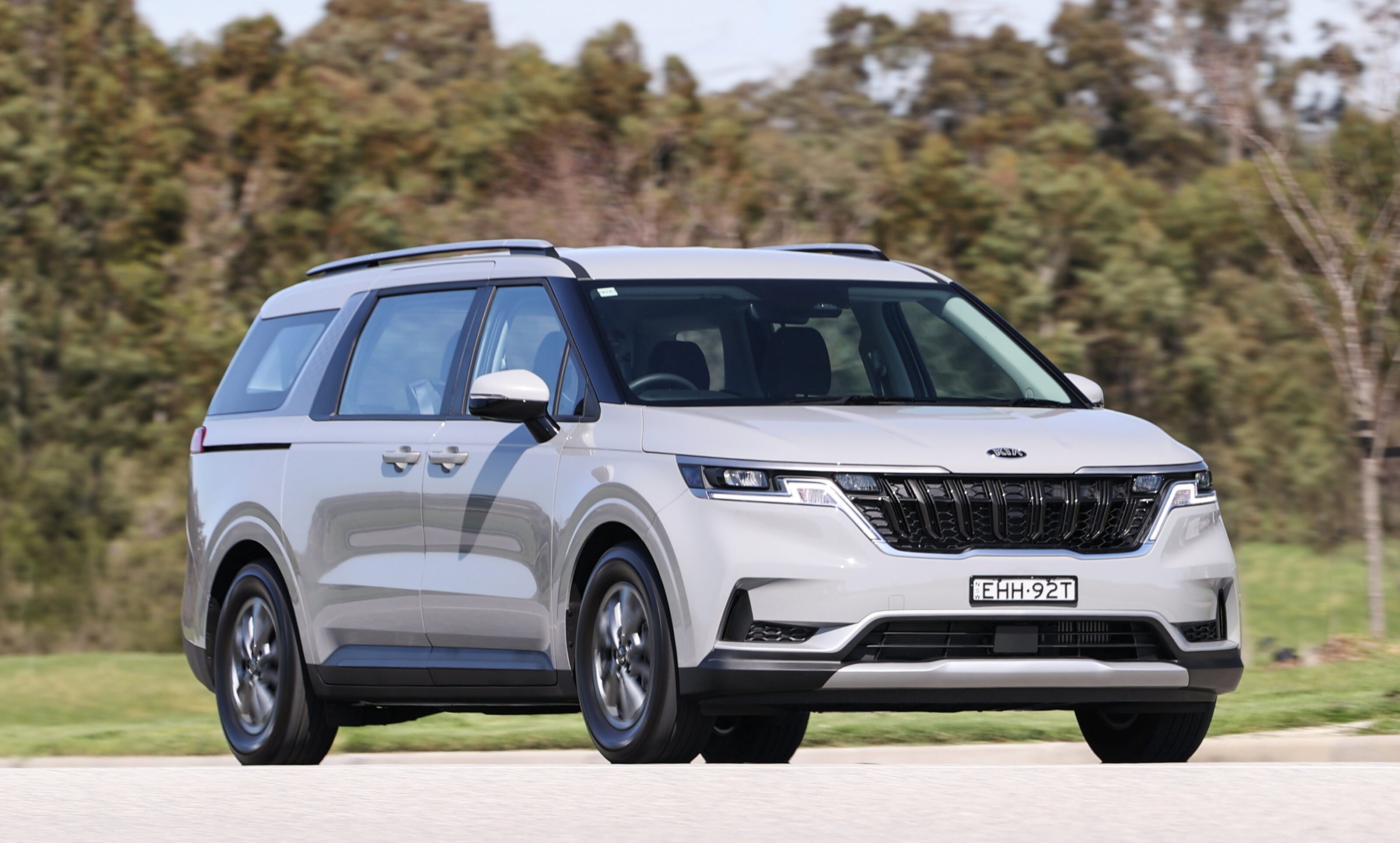
All in all, the Carnival remains a bright choice in the people mover segment, one that offers enough practicality and performance to genuinely ask why growing families look past it when rushing to their next urban-bound SUV.
Cloth seats and manual air-con, as well as the smaller touchscreen, do make the base model’s utility more obvious. Still, the Carnival’s core purpose is more attractive because of its recent overhaul.
Slicker styling and an updated cabin show the Carnival is more focused on the driver, as do its impressive dynamics and driveability that are fortunately un-SUV-like – even if they are not quite suited to the race track environment featured in its TV commercial.
And while it’s unlikely the Carnival has the gravity to attract a large enough chunk of prospective SUV buyers to mark a watershed moment, there’s no reason why the Carnival won’t remain king of its segment for some time.
EDITOR’S NOTE: The vehicle pictured is wearing Kia’s older logo, but is otherwise current specification.
Score breakdown
Things we like
- Excellent handling
- Smooth, grunty powertrain
- Functional interior
Not so much
- Bare specification in S trim
- Steering rack rattle
- Front seats could be comfier


